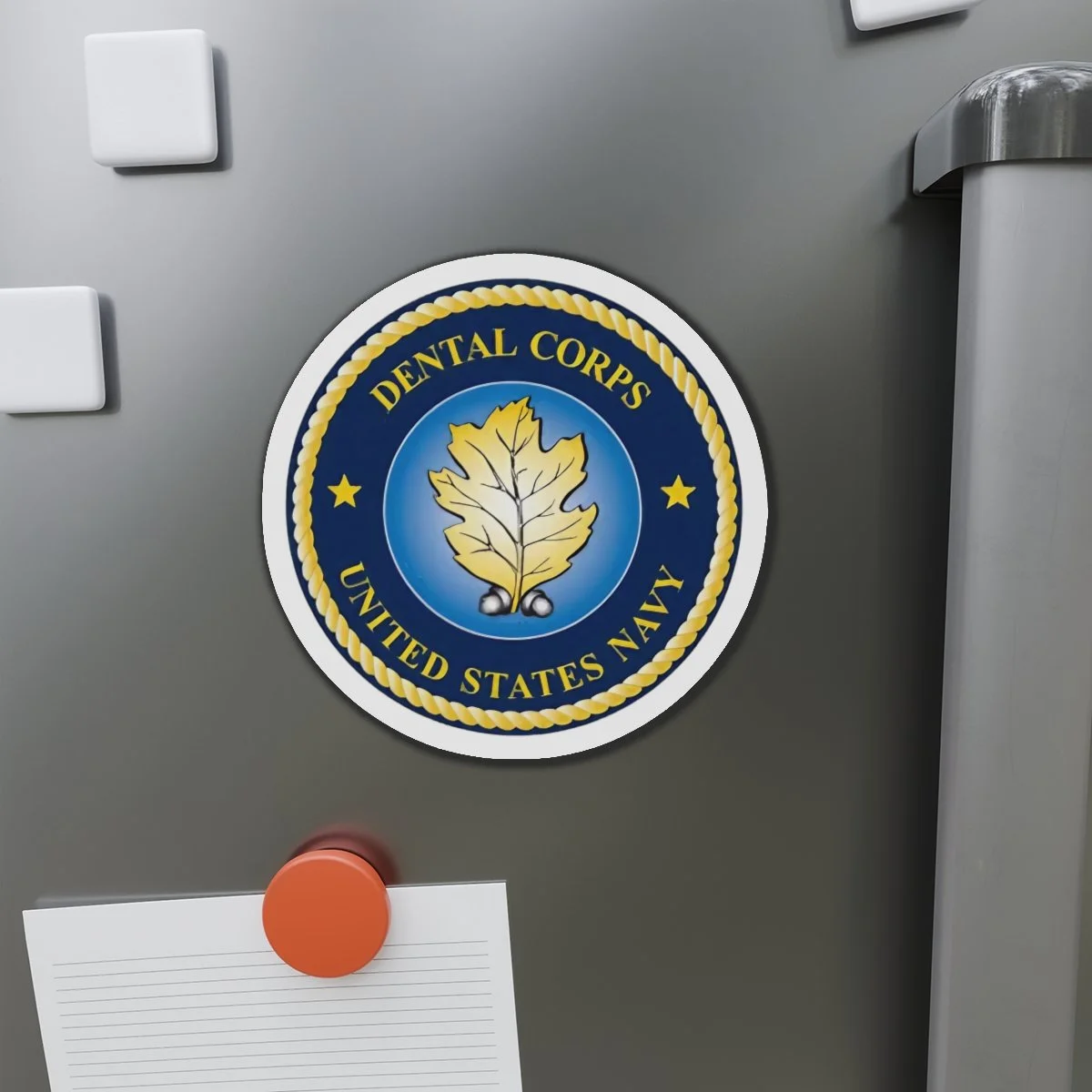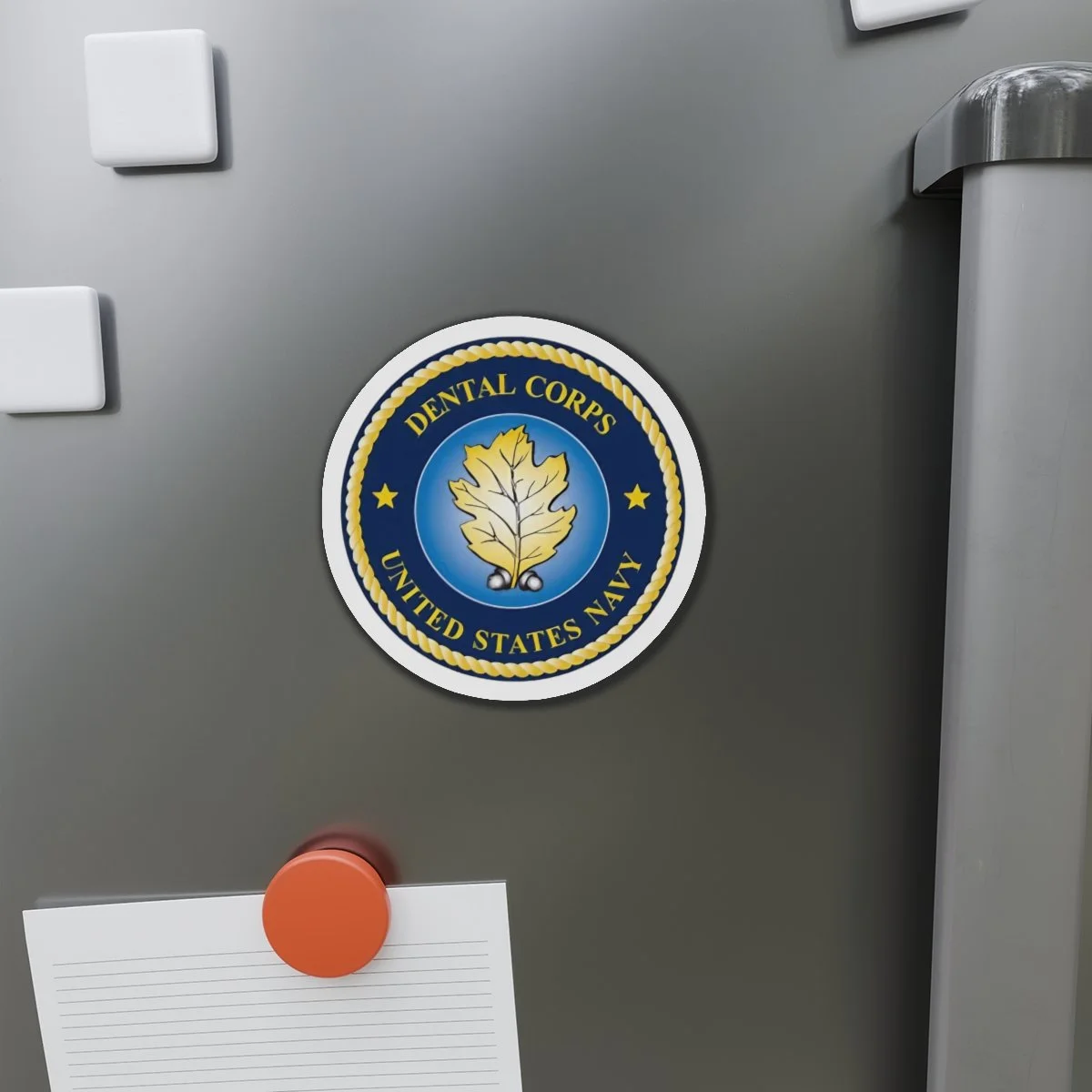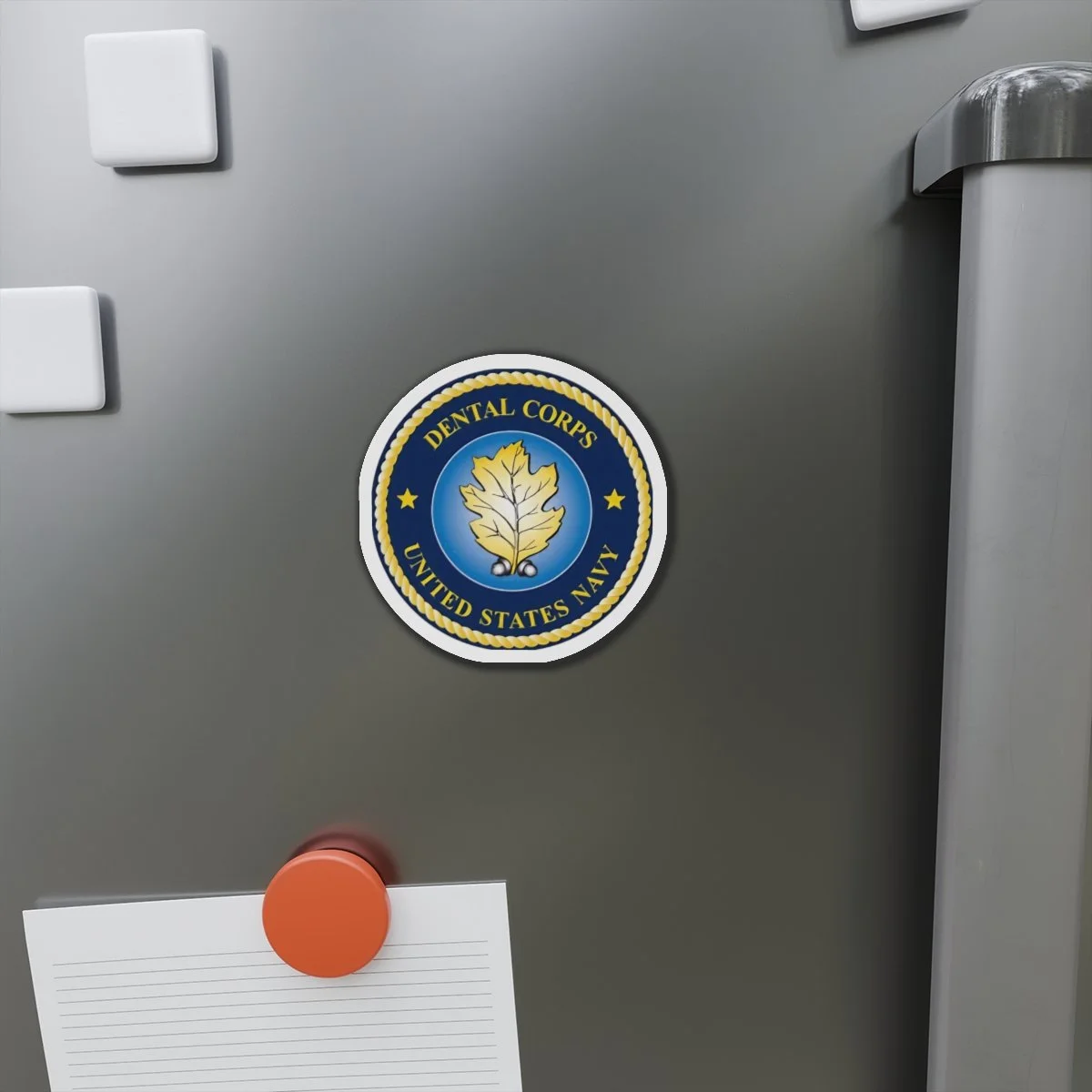 Image 1 of 5
Image 1 of 5

 Image 2 of 5
Image 2 of 5

 Image 3 of 5
Image 3 of 5

 Image 4 of 5
Image 4 of 5

 Image 5 of 5
Image 5 of 5






Navy Dental Corps Car / Truck Vinyl Magnet
from $6.50
Proudly show that you're a Navy Dental Corps Officer with the Corps Logo die cut magnet . You can proudly put it on your car or truck and remove it when you have to wash it. Made with the die-cut technique, these magnets are flexible and highly durable. Choose between 5 different sizes and get the best fit for your decorating needs.
*Material: Vinyl
*Suitable for outdoor use
* Flexible and durable material
*Black backing
*Five sizes to choose from
History of the Navy Dental Corps
The history of Navy Dentistry dates back to 1912, following the establishment of the Dental Corps by an act of Congress, signed by President Howard Taft. The Corps has evolved significantly since its inception, with Navy dental officers initially appointed at the rank of Lieutenant and playing crucial roles during major conflicts, including World War I, where they completed advanced oral surgery courses and were deployed on combatant ships and with Marine ground combat units. The establishment of the U.S. Naval Dental School in 1923 marked a significant milestone, further professionalizing Navy Dentistry.
Throughout World War II, the Korean War, and into the Vietnam War, Navy Dentists were integral to providing care on the battlefield, contributing to medical and dental advancements, and participating in humanitarian efforts. Their roles expanded, with dental officers serving aboard the USS Nimitz and participating in emergency responses like the Beirut barracks bombing in 1983. The commissioning of the USNS Mercy and USNS Comfort in the mid-1980s enhanced the Navy's capacity to deliver dental services during operations.
The 1990s saw the Dental Corps supporting operations in the Gulf War, Somalia, and Haiti, with a focus on both military and humanitarian dental care. Following the September 11 attacks in 2001, Dental Corps personnel were among the first responders at the Pentagon. In 2003, Rear Admiral Carol I. Turner became the first female Chief of the Dental Corps, marking a significant milestone in the Corps' history.
Today, Navy Dentistry remains a critical component of the military's health service support, maintaining high operational readiness and contributing to both combat and humanitarian missions worldwide. Their commitment to advancing dental practice and supporting the troops, whether on land or at sea, underscores the enduring value of the Dental Corps to the U.S. Navy and Marine Corps.
Size:
Shape:
Quantity:
Proudly show that you're a Navy Dental Corps Officer with the Corps Logo die cut magnet . You can proudly put it on your car or truck and remove it when you have to wash it. Made with the die-cut technique, these magnets are flexible and highly durable. Choose between 5 different sizes and get the best fit for your decorating needs.
*Material: Vinyl
*Suitable for outdoor use
* Flexible and durable material
*Black backing
*Five sizes to choose from
History of the Navy Dental Corps
The history of Navy Dentistry dates back to 1912, following the establishment of the Dental Corps by an act of Congress, signed by President Howard Taft. The Corps has evolved significantly since its inception, with Navy dental officers initially appointed at the rank of Lieutenant and playing crucial roles during major conflicts, including World War I, where they completed advanced oral surgery courses and were deployed on combatant ships and with Marine ground combat units. The establishment of the U.S. Naval Dental School in 1923 marked a significant milestone, further professionalizing Navy Dentistry.
Throughout World War II, the Korean War, and into the Vietnam War, Navy Dentists were integral to providing care on the battlefield, contributing to medical and dental advancements, and participating in humanitarian efforts. Their roles expanded, with dental officers serving aboard the USS Nimitz and participating in emergency responses like the Beirut barracks bombing in 1983. The commissioning of the USNS Mercy and USNS Comfort in the mid-1980s enhanced the Navy's capacity to deliver dental services during operations.
The 1990s saw the Dental Corps supporting operations in the Gulf War, Somalia, and Haiti, with a focus on both military and humanitarian dental care. Following the September 11 attacks in 2001, Dental Corps personnel were among the first responders at the Pentagon. In 2003, Rear Admiral Carol I. Turner became the first female Chief of the Dental Corps, marking a significant milestone in the Corps' history.
Today, Navy Dentistry remains a critical component of the military's health service support, maintaining high operational readiness and contributing to both combat and humanitarian missions worldwide. Their commitment to advancing dental practice and supporting the troops, whether on land or at sea, underscores the enduring value of the Dental Corps to the U.S. Navy and Marine Corps.
